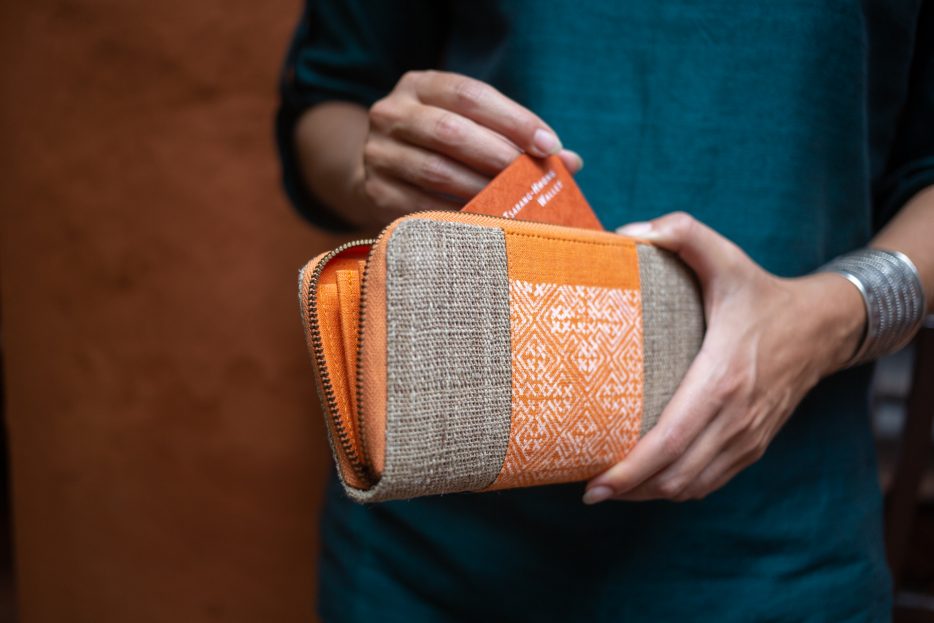Share this article
Unravelling the Tsarang-Hmong Purse - behind the scenes on the time taken to make a handmade luxury purse.
To appreciate a handmade product one must understand the time and dedicated skills and experience poured into its making. Often, a product appears to look simple; it’s this appearance of simplicity that is actually very complex - it requires a heavy amount of sampling, adjusting, re-making, re-designing in order to achieve its simple perfection.
Design time in such handmade luxury products is unequivocal. In this case, the Tsarang-Hmong Purse presents itself as a highly functional item with the use of textiles that pose their own challenges. Their beautiful imperfections here are enhanced and worked into the design rather than trying to hide them. The stiffness of the raw nettle weave presents challenges in shaping to achieve a sleek rounded finish. The result is a simple product in appearance with complex handwork involving many hours of design and remaking.
Simplicity is the result of good design; this is generally the simple appearance that accounts for the most design time and manufacturing time. "For this design, I may have spent one or 2 days technical designing and problem solving, with an additional potential 30 hours of sample making," designer Marina Shrestha says.
Here, we unravel the Tsarang-Hmong Purse, designed by myself, Marina Shrestha, handmade by artisans at Marina Vaptzarova.
Exactly how long does it take to assemble a single purse? For the purpose of this post we have simplified the tasks included. Needless to say, each stitch, each fold, each cut is carefully carried out – the time documents expresses this attention to detail.
Note: this only includes the assembly of all the pieces. It does not include the making of the textiles and all its accessories (like zips etc) or the screen-print motif.
The Outer Purse Cover

Cover with outer Nettle weave and inner linen :
- A board is carefully cut with rounded corners in its right shape and size.
- The nettle weave is ironed and cut in the same shape and size.
- It is then stuck on the board and delicately and perfectly folded around the board’s corners. This is a delicate step and the result needs to be perfect.
- Another piece of fabric, made of linen, is ironed, cut and folded into the same shape to line the purse.
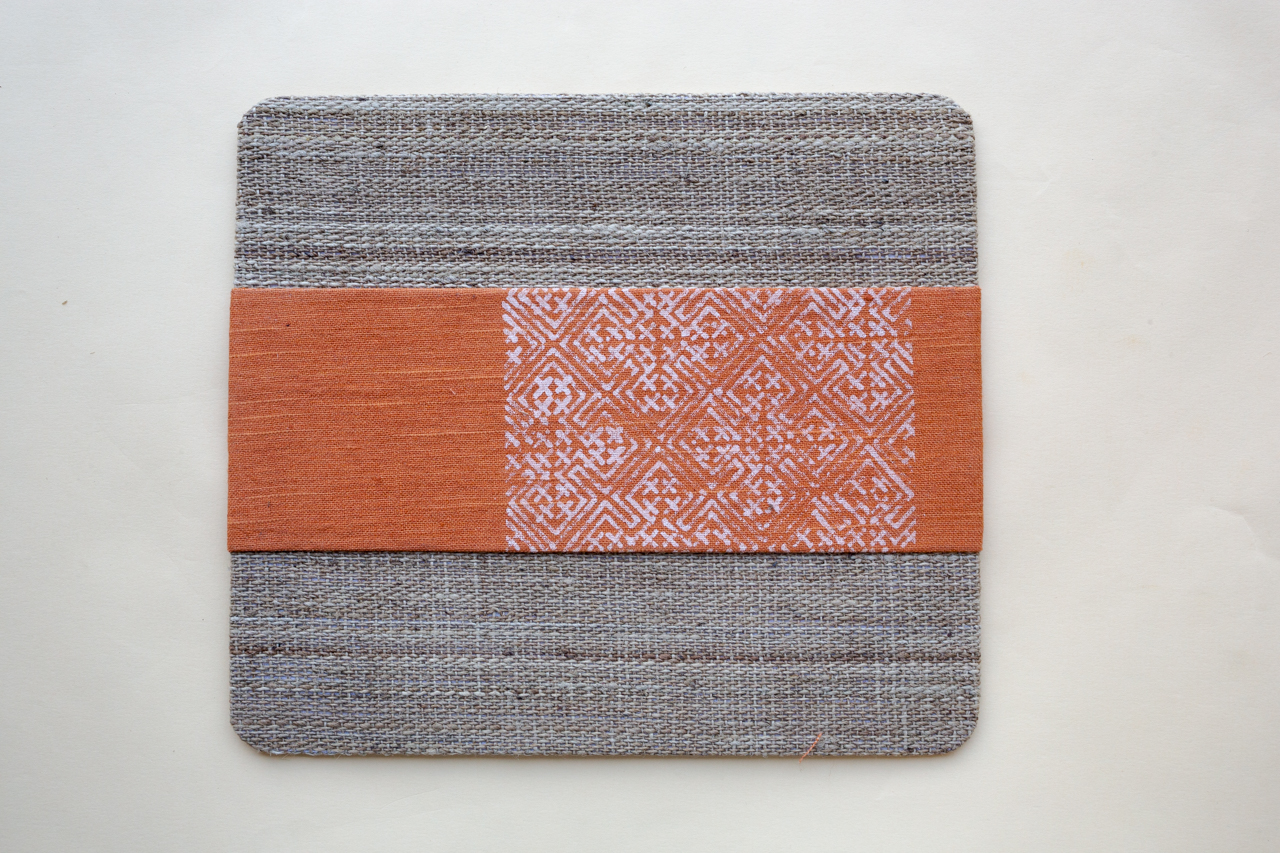
Linen printed for cover :
- The screen-printed linen is cut, ironed and folded.
- It is then placed carefully on the nettle weave cover and stitched.
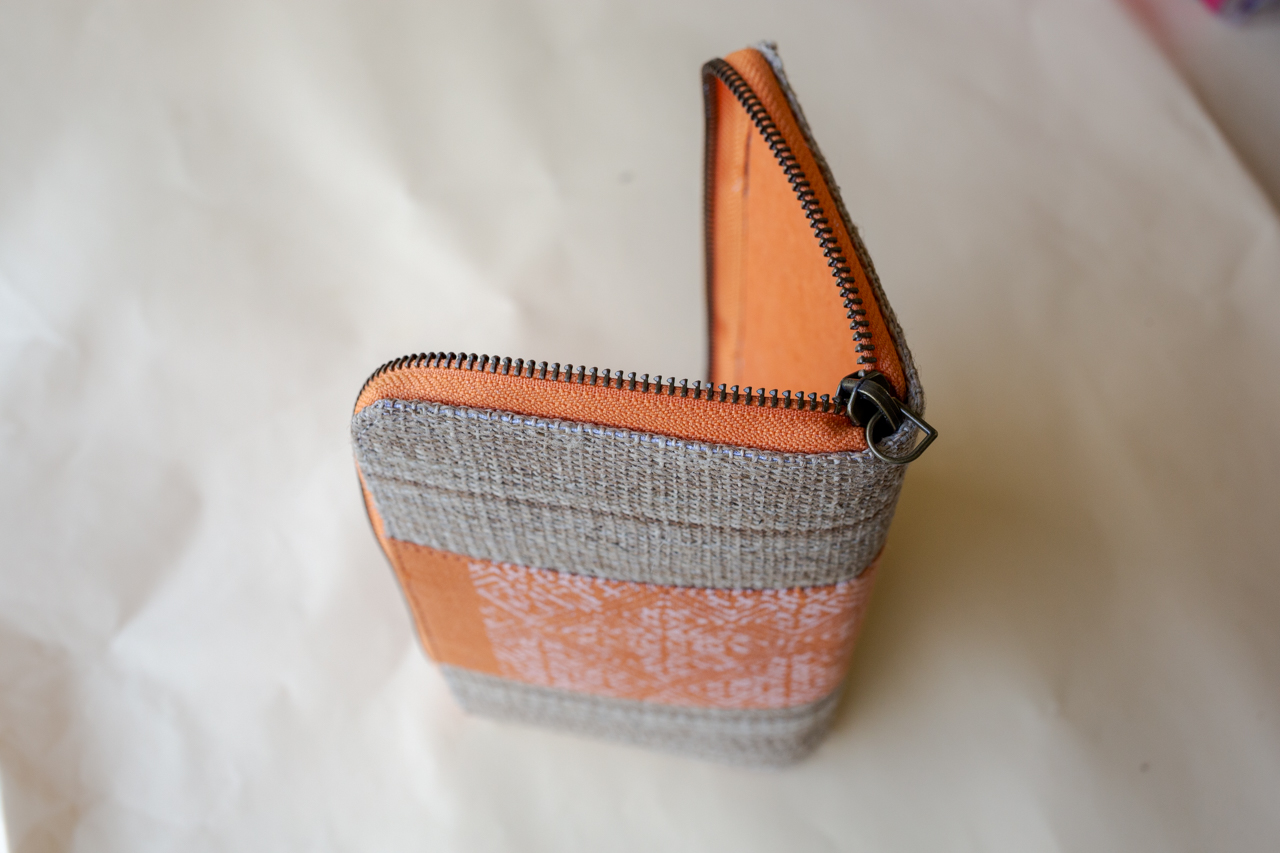
Main zipper :
- The main zipper is basted (using temporary loose stitches) in place
- It is then delicately and slowly stitched all around the board and fabrics making sure the round corners are all well done.
- The end parts of the zipper are fit into place so that they do not show.
The inner purse partitions
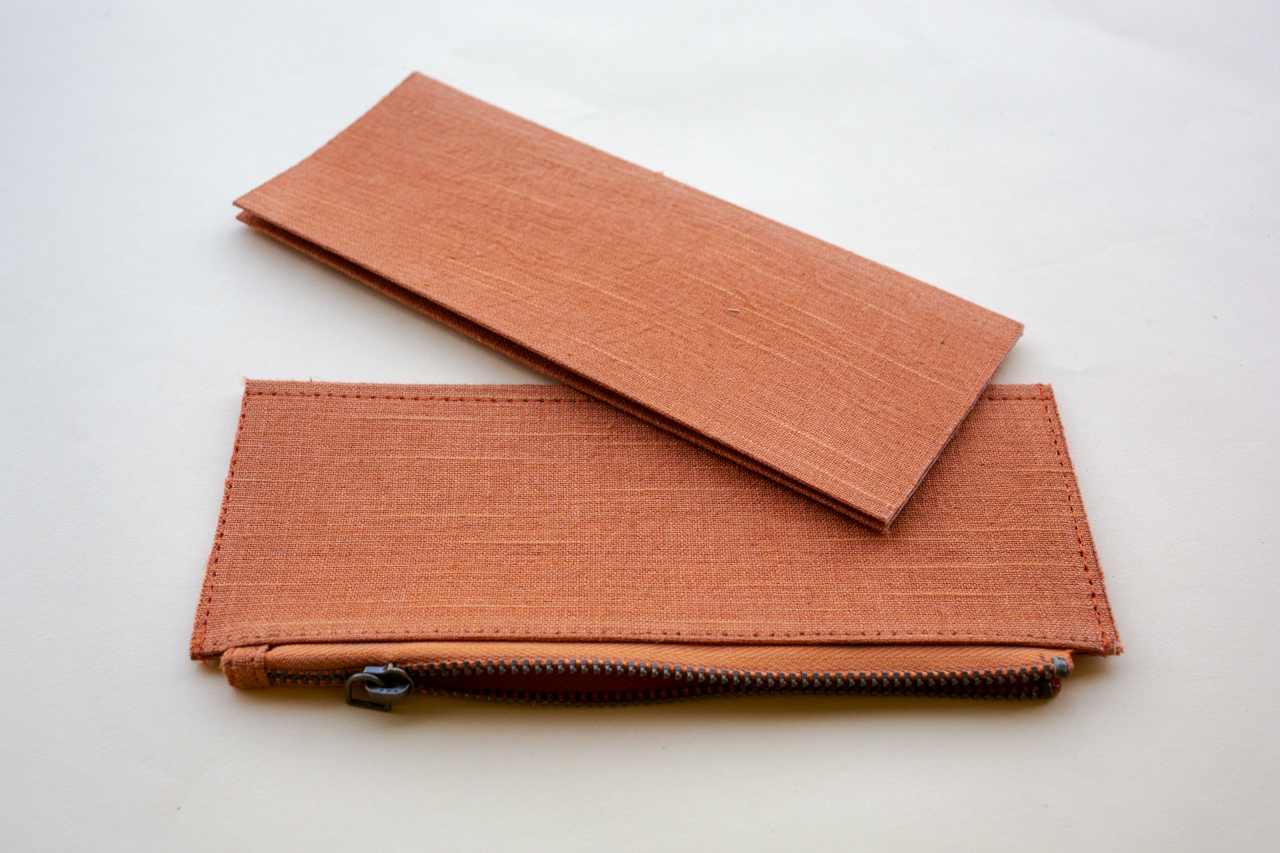
Inner partitions and small zipper :
- Fabric for the inner pockets is cut and ironed
- A small zipper is fitted and stitched on one of the inner pockets
- Each pocket is stitched

Credit card pockets :
- Linen is cut, ironed and stitched into small credit card holder pockets.
- All slots are checked with cards to ensure they slide in and out perfectly.
Note: making these pockets was challenging in calculating the right sizes – the upper credit card should not go down the full depth of the pock which implies a lot of inner cuts and stitch work that are invisible. Further, making such pockets with a high-end finish with linen is a very delicate skill.
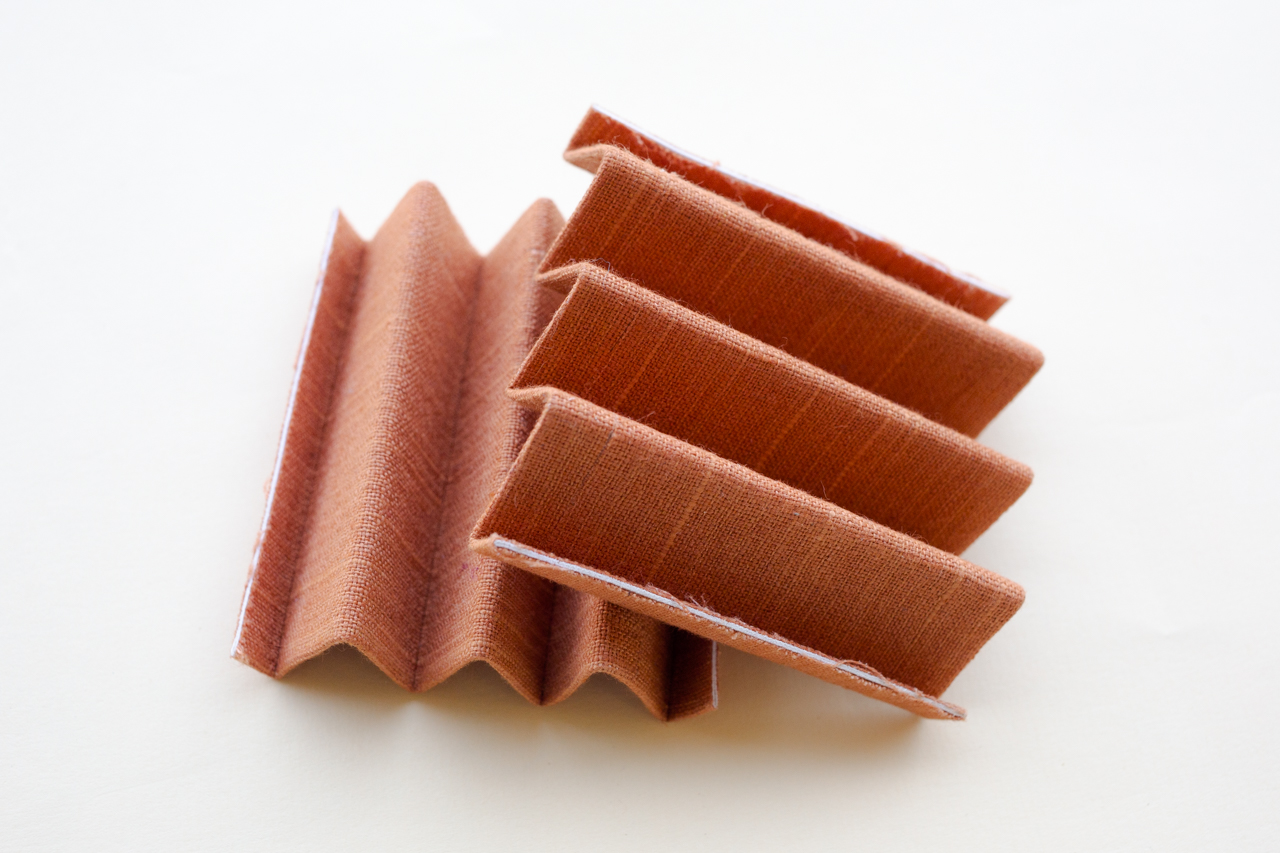
Pleated parts on both sides :
- Fabric and artboard are accurately cut to measure and ironed.
- The two elements are glued together and precisely folded.
These will be the inner holder for all the inner partitions.
Assembling the purse
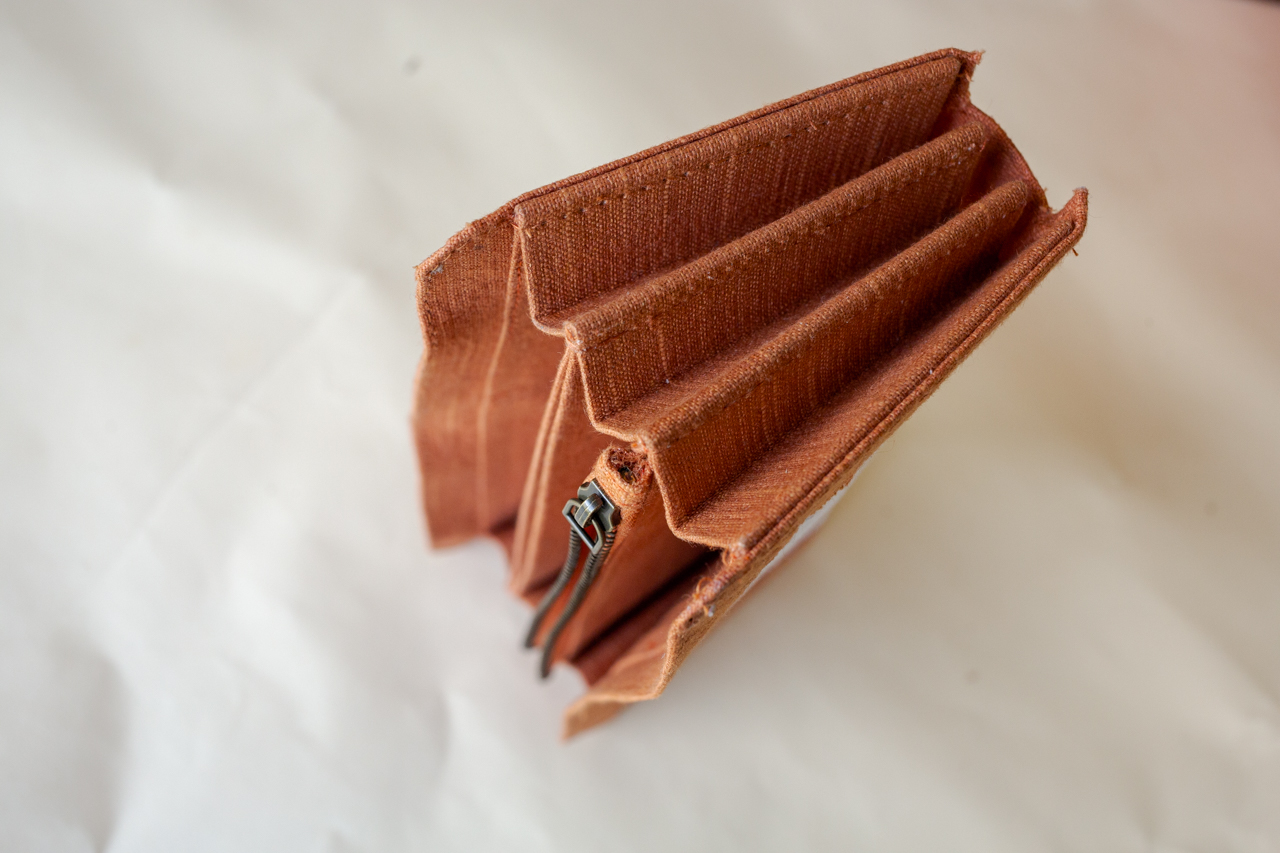
Assembling inner parts :
- All inner linen pockets and partitions are basted in place.
- Careful and accurate stitching fit the pockets within the pleated parts.
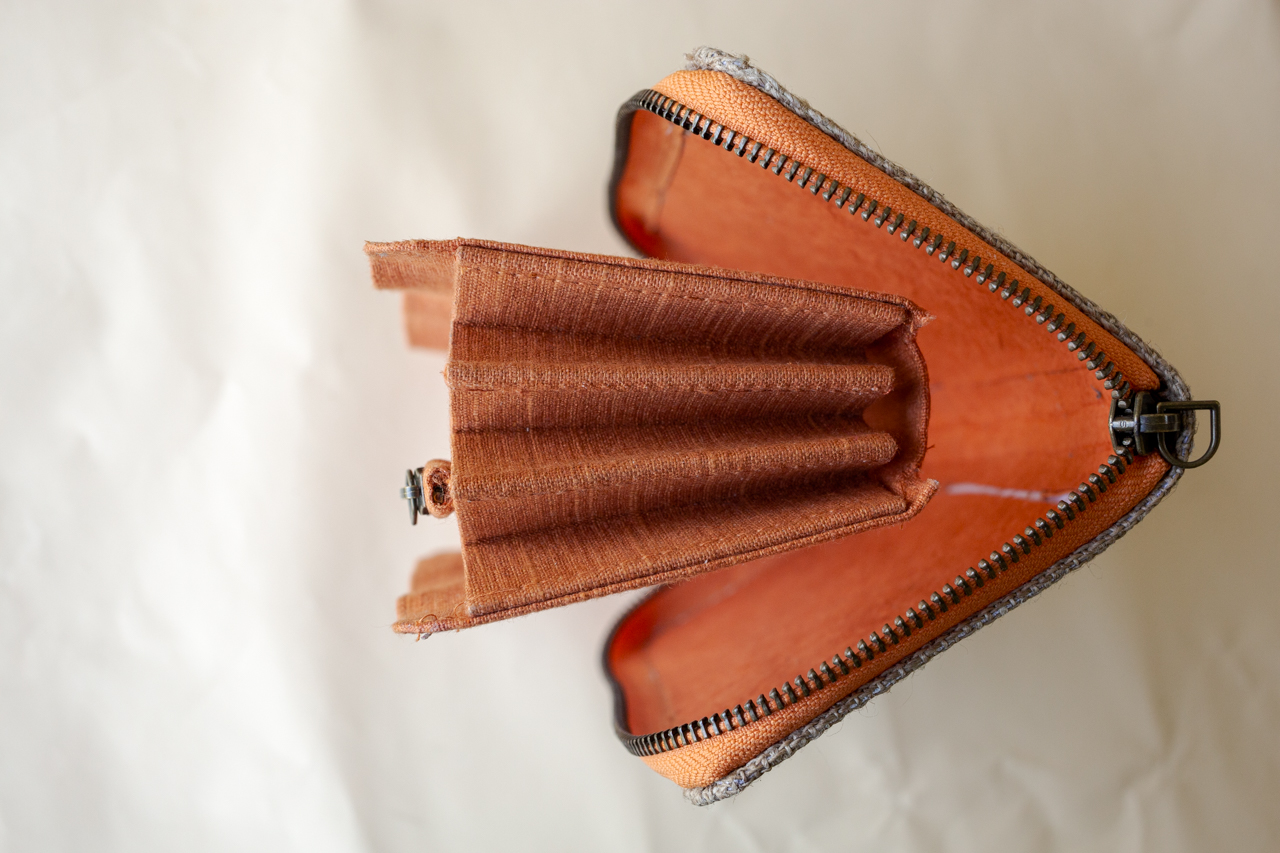
Assembling inner and outer parts :
- The inner part complete with all pockets is held in place with the out cover for final assembling.
- With careful attention to their positions and fixed points making adjustments as needed, the two main elements are tightly glued and stitched to each other.
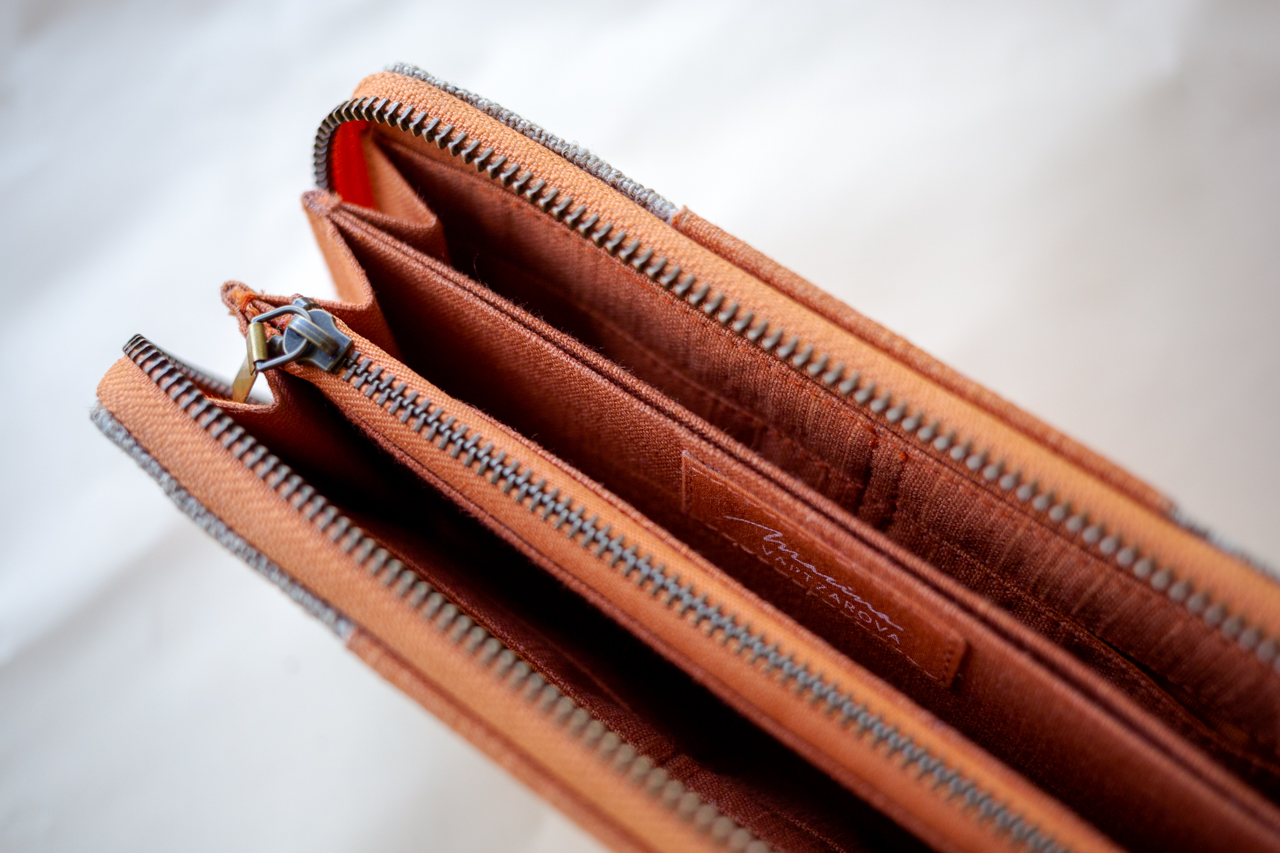
Quality check and finishing :
- The final product is checked for any flaws, adjusted when possible.
- Cards should easily slide in and out of their slots in a straight manner.
- End stitches and threads of fibres from the fabrics are cut for a smooth finish.
- Zippers are verified and are properly functioning.
Ready to meet its owner! Each Marina Vaptzarova finished product is carefully packed and complete with a story card screen printed on handmade Daphne paper.
Often we are asked “why is your product so expensive?” This is a genuine question, which often comes from a lack of understanding of how a product is made, the skills required and the time involved in its production. Alongside these factors, innovative and careful design construction of the product itself.
In a recent workshop held in our premises, 6 women tried their hand at making their own journals. One lady remarked on Facebook, “Having now seen what it takes to create one single item my answer to anyone saying her products are expensive would be, “They are amazing value considering the labor involved, in fact they should cost more!””
Cost, therefore, is a consequence of the dedicated time and hard worked skills involved in making a product. Producing everything by experienced hands with high attention to detail brings its own challenges – these qualities cannot be replaced by machines. It’s the skilled eyes, hands and dedication that make a product unique.
The final high-end handmade product is the result of “hundreds of hours of experiments and failures, months of frustration and moments of joy. You’re not buying an item, you are buying a passion, a moment of a person’s life.”
In a recent blog about sustainable and ethical buying and what it means, I discuss the way mass production and consumerism has distorted the value and understanding perceived on product. We have developed a "disposable consumption behaviour," which has negative consequences on our own wellbeing, the supply chain and makers and our planet’s most vulnerable resources.
Creating products that are long-lasting, respect the resources and its makers ultimately saves the buyer money. Consequently, the impact is a positive experience between its user, its maker and its resources.
A Handmade Connection is felt – from a single object, you can imagine the person stitching, leaving a trace of them on the product you know hold. You’re connected with the maker and their place of work, culture and traditions. It can go back centuries to the makers’ ancestors who passed on their trade and skills – this is pure craftsmanship.
When buying an item - remember that someone or some people poured their years of skills and experience into it. Let's respect this at all times, together with the natural resources used for it creation.
About Marina Vaptzarova
Designing and creating conceptions has been part of her professional life for over 25 years. During this period, Marina revisited the traditional raw materials, craftsmanship and skills of Nepal and transposed these into contemporary design handicrafts and accessories. Her designs are fully experienced by the customer and play a prominent role in addressing the needs of the hospitality sector.
Marina Shrestha is a specialist consultant designer for interior handmade accessories in the hospitality sector, particularly in the luxury boutique segment. She also provides consultation on product development for handmade crafts.
Share this article
